[dropcap]The[/dropcap] countdown to the 2017 solar eclipse over America is ticking louder and louder as the date of Aug. 21 approaches.
One Bartlett business had a long-range vision that began more than two years ago, because its leaders knew how big of a deal the eclipse would be. As a result, American Paper Optics was prepared and has been meeting demands as high as 3,000 orders per day for the past couple of weeks just on its e-commerce platform.
And the numbers keep rising as the manufacturing company works 24/7 to meet the demand for their protective solar eclipse glasses.
Jason Lewin, director of marketing, said the company is the largest 3-D optics manufacturer in the world, and the wildly popular eclipse glasses are just one of the lines they carry. Lately, it’s become their best seller, and they are the only game in town for companies that haven’t already bought glasses.
On Friday, he said, “We are the only company still manufacturing these glasses right now.”
American Paper Optics also has begun shipping the orders via FedEx Express to ensure that people who are placing late orders get them in time. It’s been amazing to company leaders to watch the demand rise and rise and rise among their customers. Some hopeful late arrivals have asked for 50,000 sets of glasses, and they’re willing to pay $1 each, when early planning would have allowed them to buy the glasses at 30-40 cents each.
The company is filling the orders that it has the bandwidth to handle before the eclipse, and their customers are selling them just as fast, Lewin said. “Every group that I’ve dealt with sells out of their stock immediately.”
Most of the company’s glasses look similar to the 3-D glasses used at the movies, except they have specially designed protective film placed in the paper glasses frame instead of the 3-D red and blue lenses. Early orders could have custom designs on the eyeglasses’ paper frame, but the company’s standard design is now the only one available. The company also makes hard plastic frames and lenses in a special set of solar eclipse glasses in partnership with Bill Nye the Science Guy.
The company has also tied in charity work with its heavy workload: It partnered with St. Jude Children’s Research Hospital to sell solar eclipse glasses with designs inspired by St. Jude patients, and American Paper Optics will be donating $50,000, which is half of the proceeds, to St. Jude.
The legitimate solar eclipse glasses from American Paper Optics have the blessings of NASA because they make solar eclipse viewing safe for up to three minutes. The safety level of knock-off glasses is anyone’s guess, although some phony ones mimic American Paper Optic’s logo and certification information. This week, Amazon is offering a refund to customers who bought counterfeit eclipse glasses from its website and warning them that inappropriate glasses can result in the loss of vision or permanent blindness.
NASA has a list of reputable vendors and safety tips online at eclipse2017.nasa.gov/safety.
Dr. Yvette Randle, a family practice physician at Saint Francis Hospital-Bartlett, advises that legitimate solar eclipse glasses are a necessity to avoid the serious eye damage known as solar retinopathy. Wear those glasses.
She said damage is often worse to people who don’t protect their eyes during an eclipse because the darkness dilates their pupils, maximizing the damage done by the sunlight that reaches their pupils when the eclipse ends.
In areas like Memphis where there is only a partial eclipse, there is no safe time during the event when people can look directly at the eclipse and avoid the sun’s damaging rays. Sensation in the eye isn’t an indicator – even serious damage can be painless.
“One hundred seconds is about the max anyone can stare at the unfiltered sun,” Randle said.
American Paper Optics glasses are for sale online at eclipseglasses.com and at some retail locations like WalMart while supplies last. The brand is recognizable to careful buyers because the lenses are silver on the outside surface, and also because users can’t see anything through them unless they are looking at the Sun. Even looking directly at indoor lighting doesn’t show anything through the glasses.
Randle said, “The test is that if you put them on, you can’t see anything BUT the Sun.”
Knockoffs also may have spelling errors printed on the glasses’ paper frames, or they may ship from China, Lewin said.
The eclipse will be unforgettable for viewers: Viewers in the path of totality (where the Sun is totally blocked) will see a black orb surrounded by a ghostly halo. Dusk will replace daylight, and bright planets and stars will be visible in the sky. The eclipse will begin and end with a partial eclipse that will last about 90 minutes. In the last 20 minutes before totality, the temperature will drop, and the sky will begin to look odd. The peak will only last about two minutes.
In the greater Memphis area, people can expect to see a 94 percent partial solar eclipse. Although people viewing the total eclipse can view it momentarily without glasses because the sun is totally blocked, that’s not true in areas where there is a partial eclipse.
The viewing time varies by location and is briefer the farther the viewer is from the path of totality. The partial eclipse will be visible in Nashville starting at 11:59 a.m., with the total eclipse beginning at 1:27 p.m. and ending at 1:29 p.m. The partial eclipse will end by 2:54 p.m.
The total eclipse will be visible in a band about 70 miles wide that stretches across the U.S. from Salem, Oregon, to Charleston, South Carolina. An estimated 60-70 million people are expected to converge on that band, Lewin said, and the numbers could easily be more. For a look at the best locations, see the map online at eclipseglasses.com.
The viewing will be a once-in-a-lifetime experience for many. The last time totality happened in the contiguous United States was nearly 40 years ago on Feb. 26, 1979. Because of the visual spectacle and the rarity of the occurrence, many educators are arranging for their students to get to see the eclipse.
Bartlett City Schools is one of many school districts in the Mid-South that has purchased enough solar eclipse glasses for all its students, and its schools are currently getting parental permission for students to view the partial eclipse during the school day on Monday. Private schools like St. Francis of Assisi and Memphis University School are also making sure that their students have an opportunity to participate. The Memphis Astrological Society is taking a road trip to the Perryville Municipal Airport between Perryville, Mo., and Chester, Il., to view the totality, and they invite people to read more about the trip at memphisastro.org.
Lewin had one last bit of advice for people experiencing the solar eclipse: Actually experience it, and savor it.
“I get that everything we do now, everybody wants to video it, and that’s fine,” he said. “But when you’re doing that, you’re not taking in the moment. … There’s going to be such amazing technology that will capture this in a billion different ways that you see afterward. Pay the dollar or two you’re going to pay for glasses, and take in the moment for the two or three minutes you’ll get to see it.”
CAROLYN BAHM is the editor of The Bartlett Express. Contact her at (901) 433-9138 or via email to carolyn.bahm@journalinc.com.

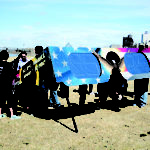

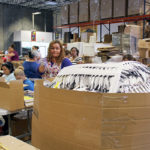
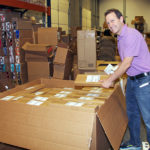
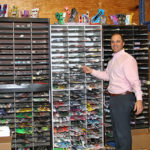
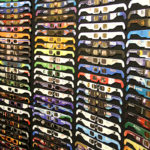
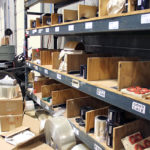
where can I purchase these glasses or can you shipped to me new Albany, ms
We are a newspaper; I just wrote about a company in Bartlett, Tenn., that makes the glasses. I hope you were able to find some and enjoy the eclipse.